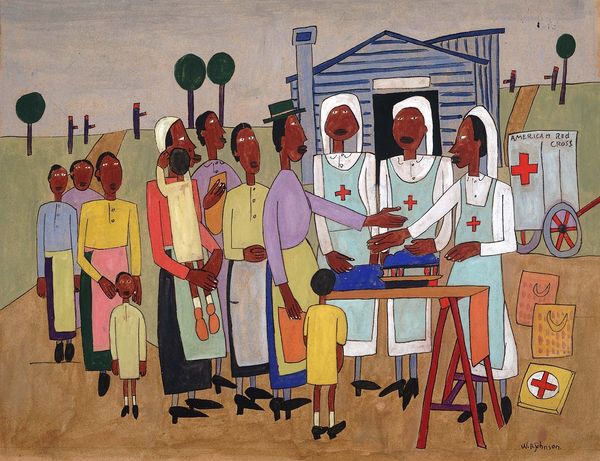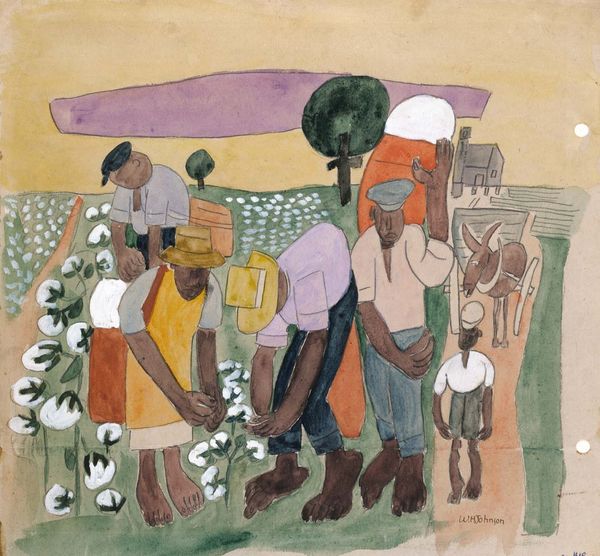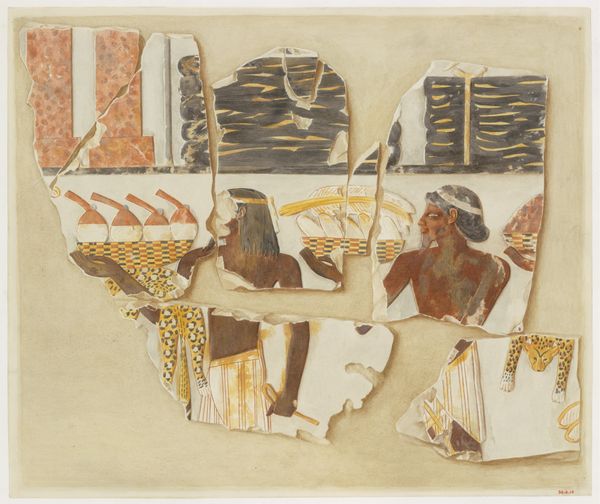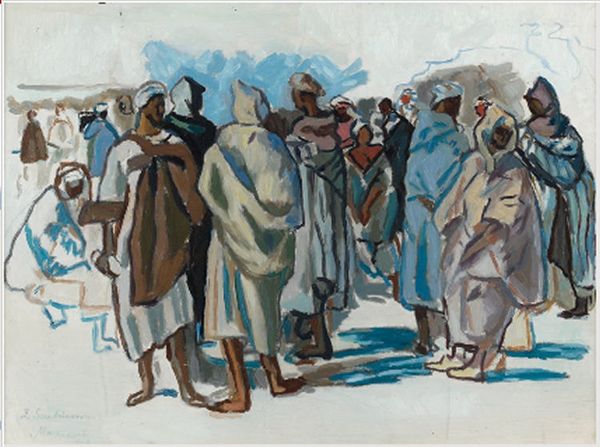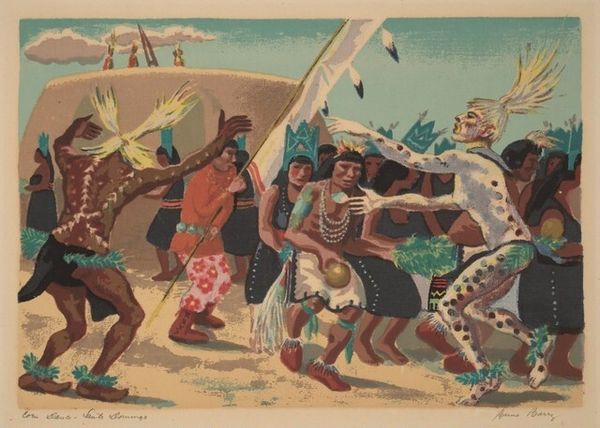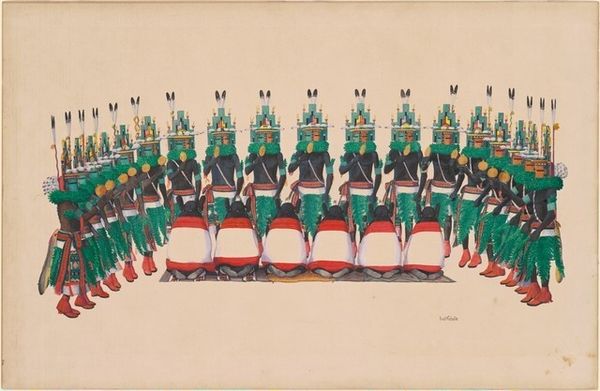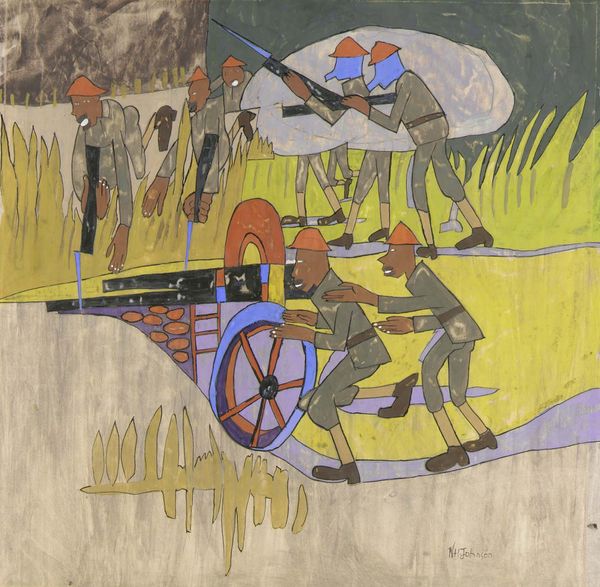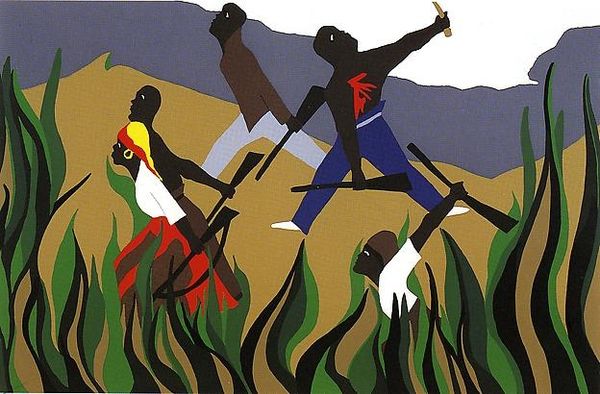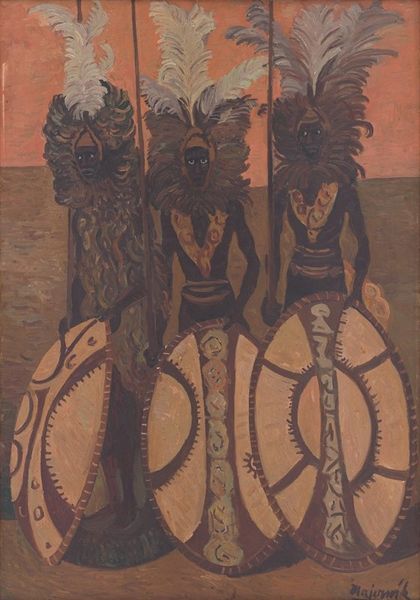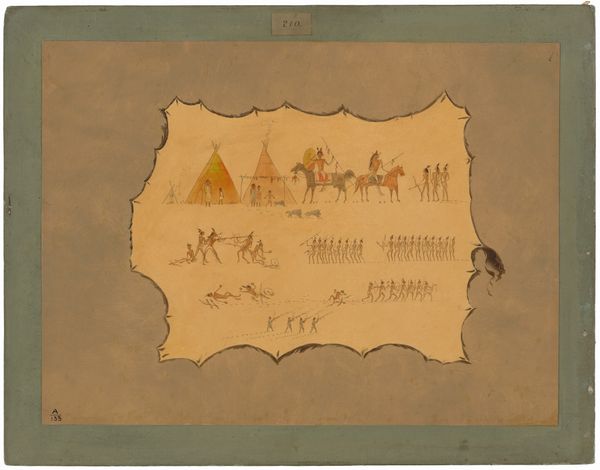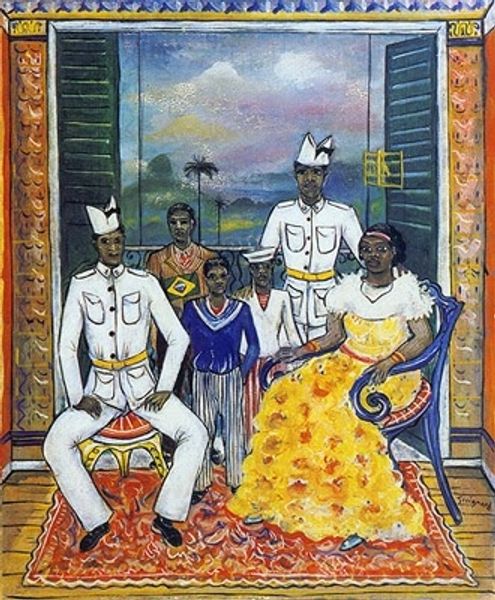
painting
#
painting
#
landscape
#
figuration
#
social-realism
#
naive art
Copyright: William H. Johnson,Fair Use
Curator: William H. Johnson created this painting, "Army Training," in 1942. I am immediately drawn to the flatness of it—almost like a graphic. It's a scene populated with these rigidly posed figures, standing at attention against a sort of ochre landscape. Editor: Yes, I am interested in Johnson’s material use here—he employs this flat style, maybe what we’d call "naive," but for very sophisticated commentary during World War II. Consider how the constraints and materials of wartime might have informed the visual culture. Did limited access to certain materials dictate artistic choices, pushing toward a raw aesthetic that echoes the lived experiences of Black soldiers facing discrimination even as they served their country? Curator: I see your point. And the artist’s choices might suggest not just constraint but an engagement with, maybe even an embrace of, certain qualities inherent in the medium. I notice a deliberate avoidance of detail—very basic shapes that emphasize, say, uniformity, rather than individual experience. He repeats simplified shapes, creating the figures by simplifying and repeating basic visual units. Editor: I would highlight the powerful irony within the composition, as it seems deceptively straightforward. Given Johnson’s personal struggles with identity and the pervasive racism of the era, this seemingly simple portrayal invites critical exploration: Does it function as a commentary on the Black American soldier’s invisibility, despite their commitment to a country that relegated them to second-class citizenship? Curator: In this visual syntax, how do those three pink streaks across the sky operate? Given everything, they stand out. It seems almost as though Johnson uses the clouds in the painting—their material, color, form, and weight, maybe their perceived lack of utility—to pose larger philosophical questions. The canvas texture gives each figure definition, underscoring the means by which Johnson makes, constructs, and assembles the material of his visual art. Editor: I wonder also if this contributes to disrupting what should be conventional depictions of patriotism and instead highlights a much more nuanced reality about labor, racism, and material struggle. Thanks to Johnson, the painting challenges its viewers to contemplate America's unfulfilled promise of freedom for all. Curator: Thank you. The dialogue really helped flesh out, for me, the subtle ways an artist’s labor resonates. Editor: Yes. I hadn’t previously thought as much about his labor and approach to painting. But situating it historically as you do makes it far more provocative.
Comments
No comments
Be the first to comment and join the conversation on the ultimate creative platform.

